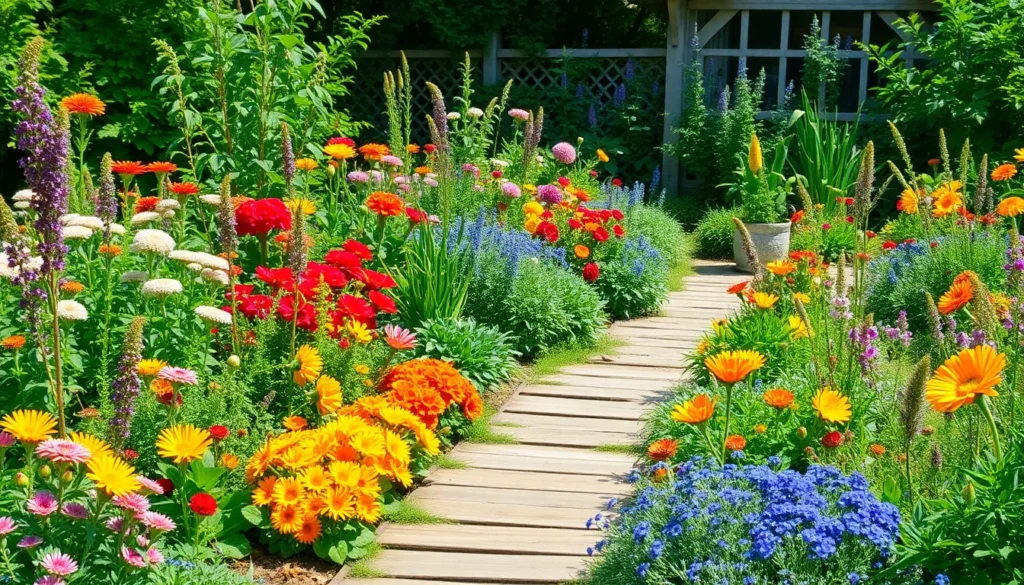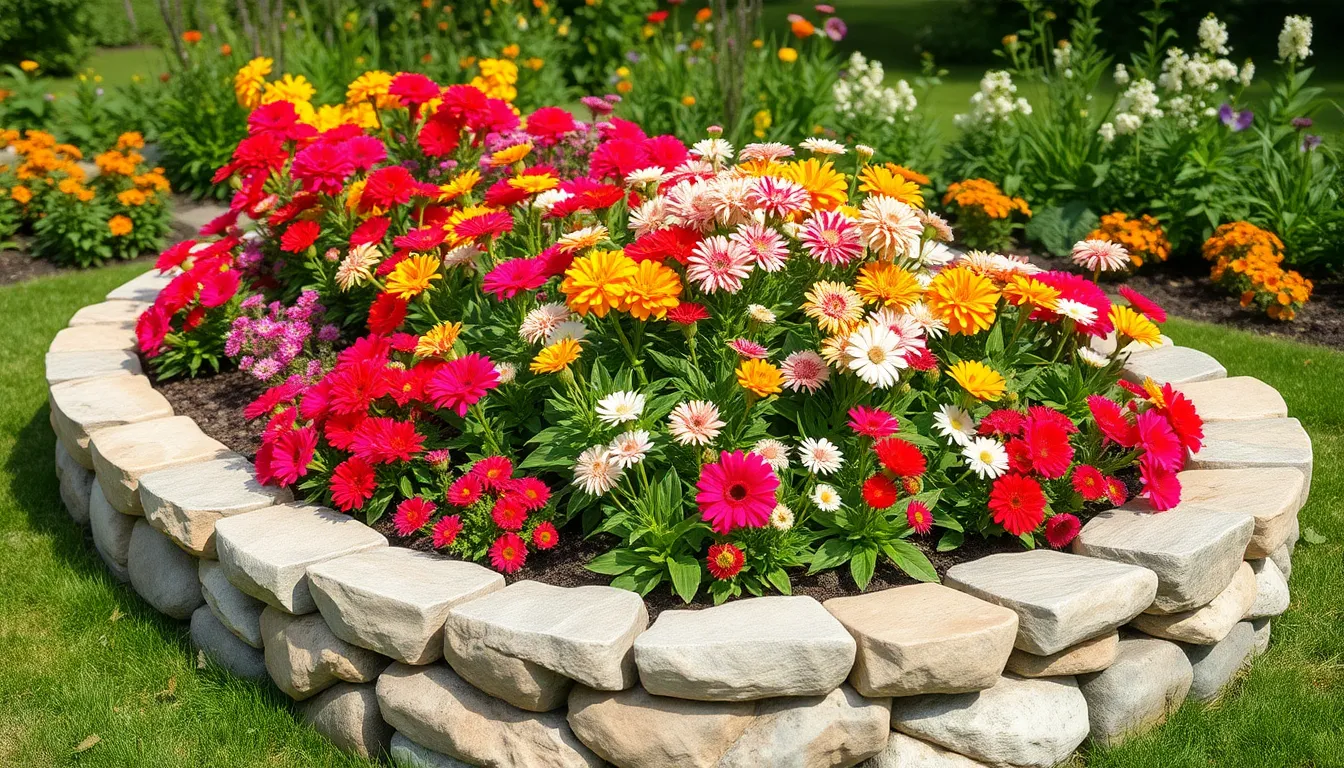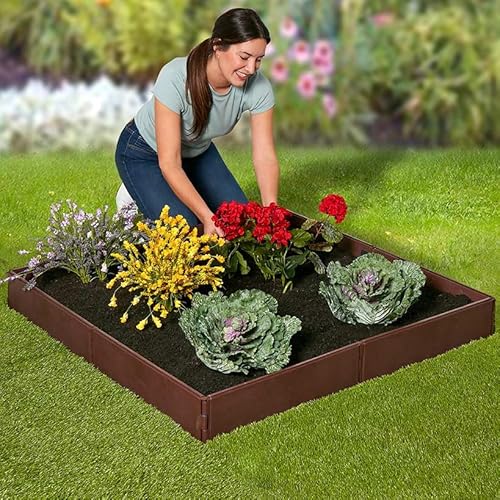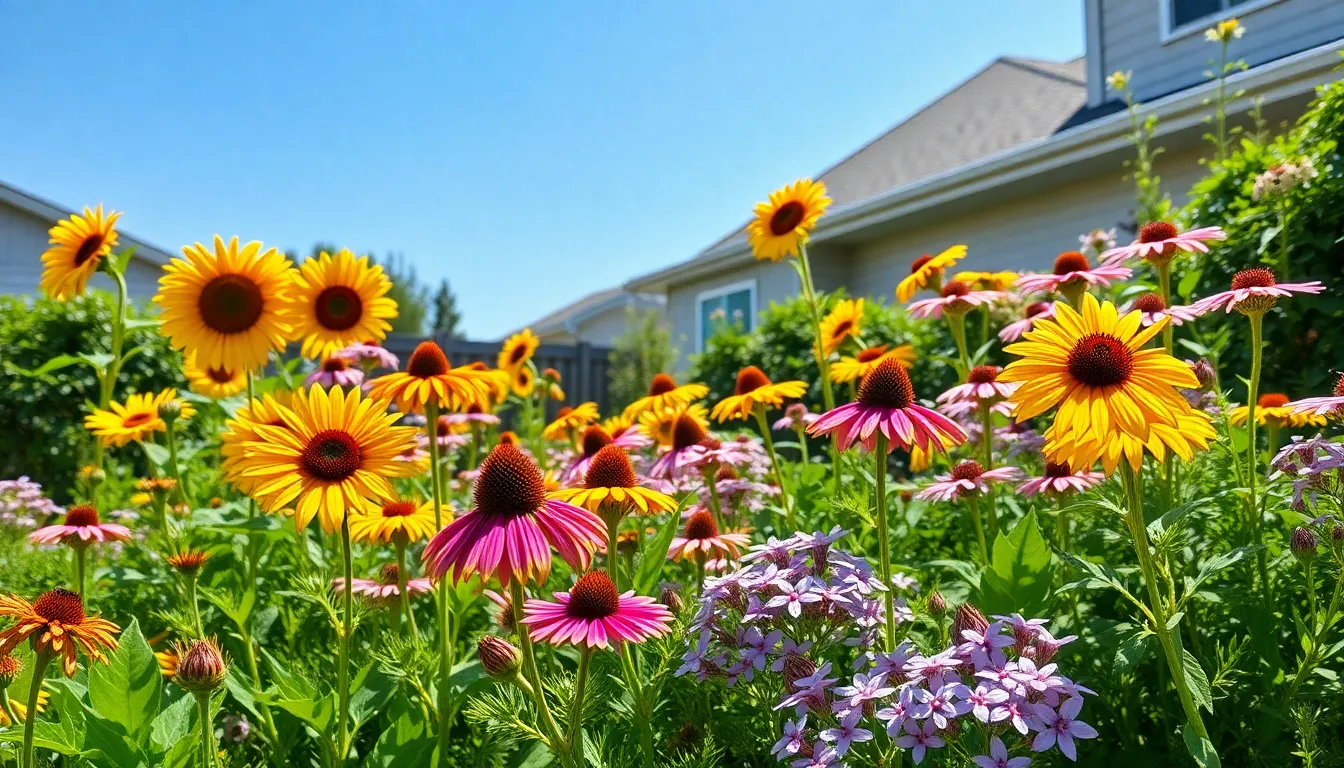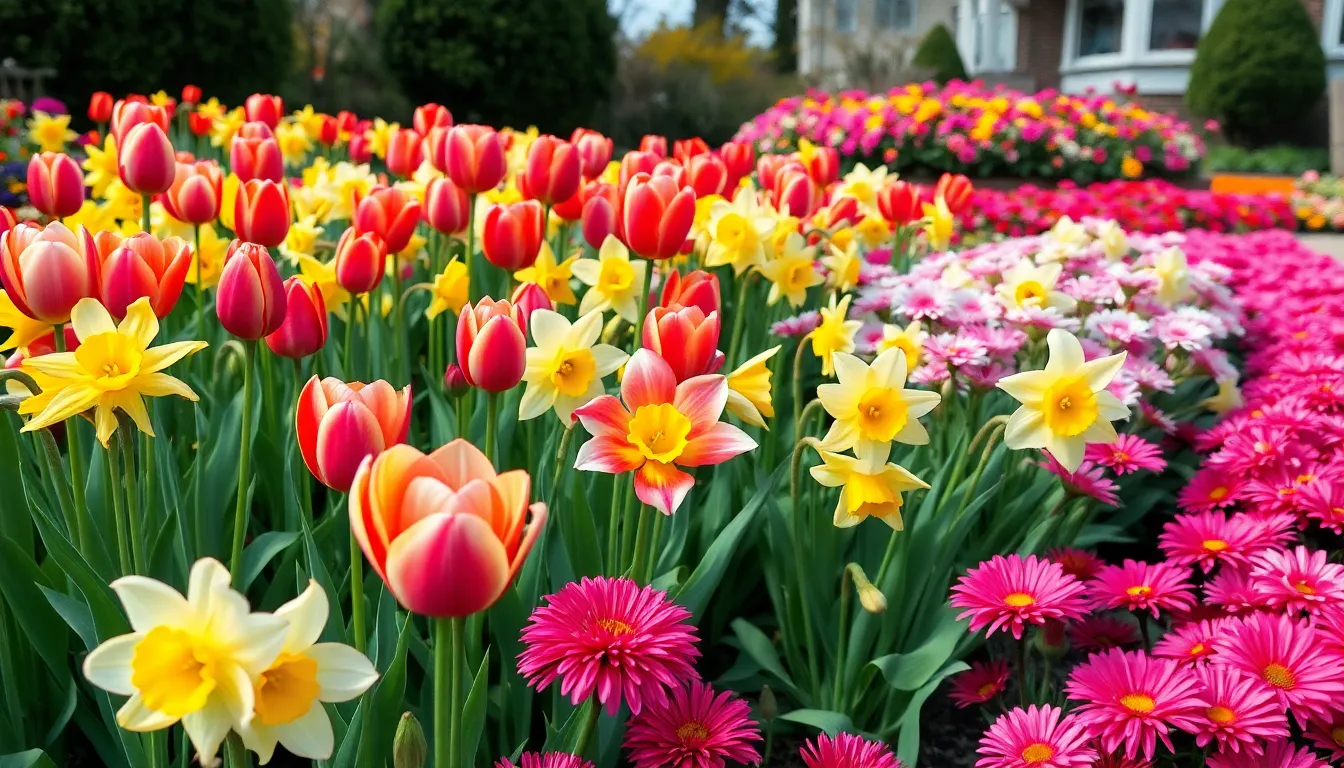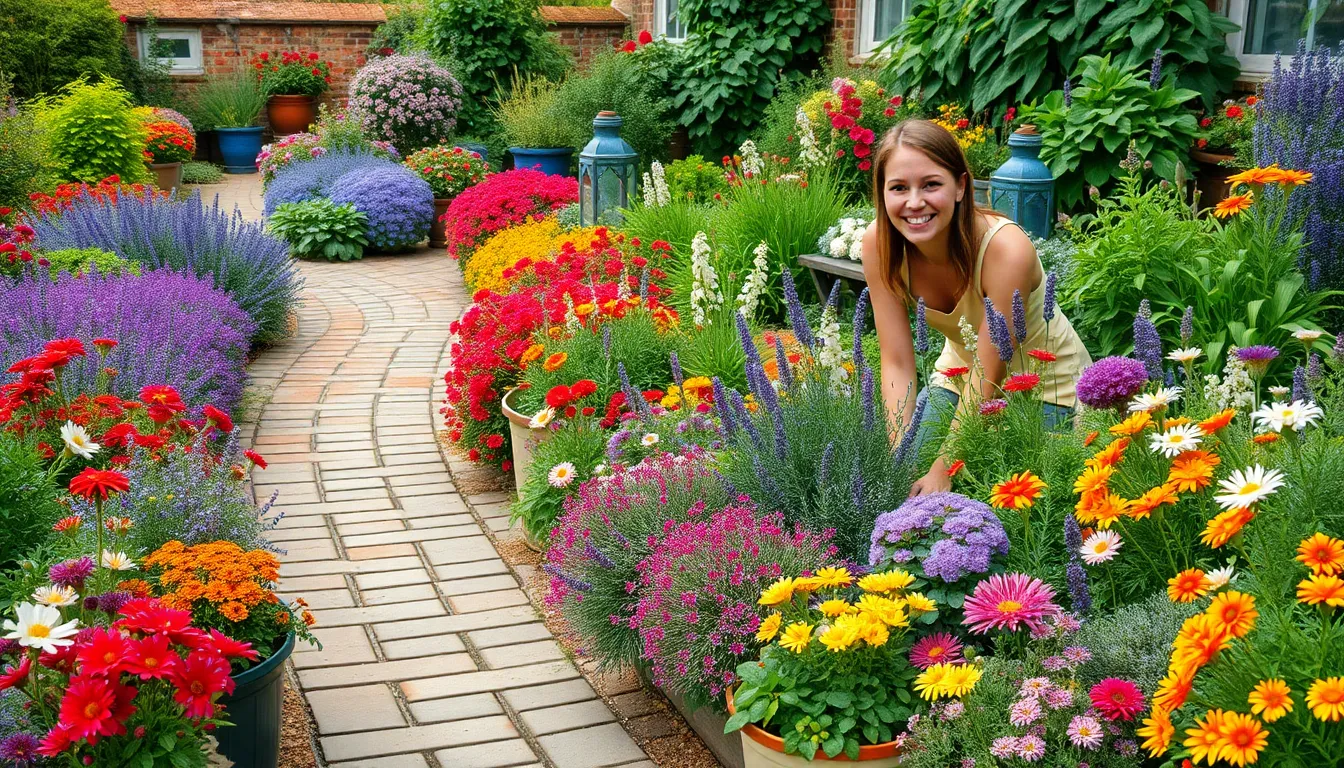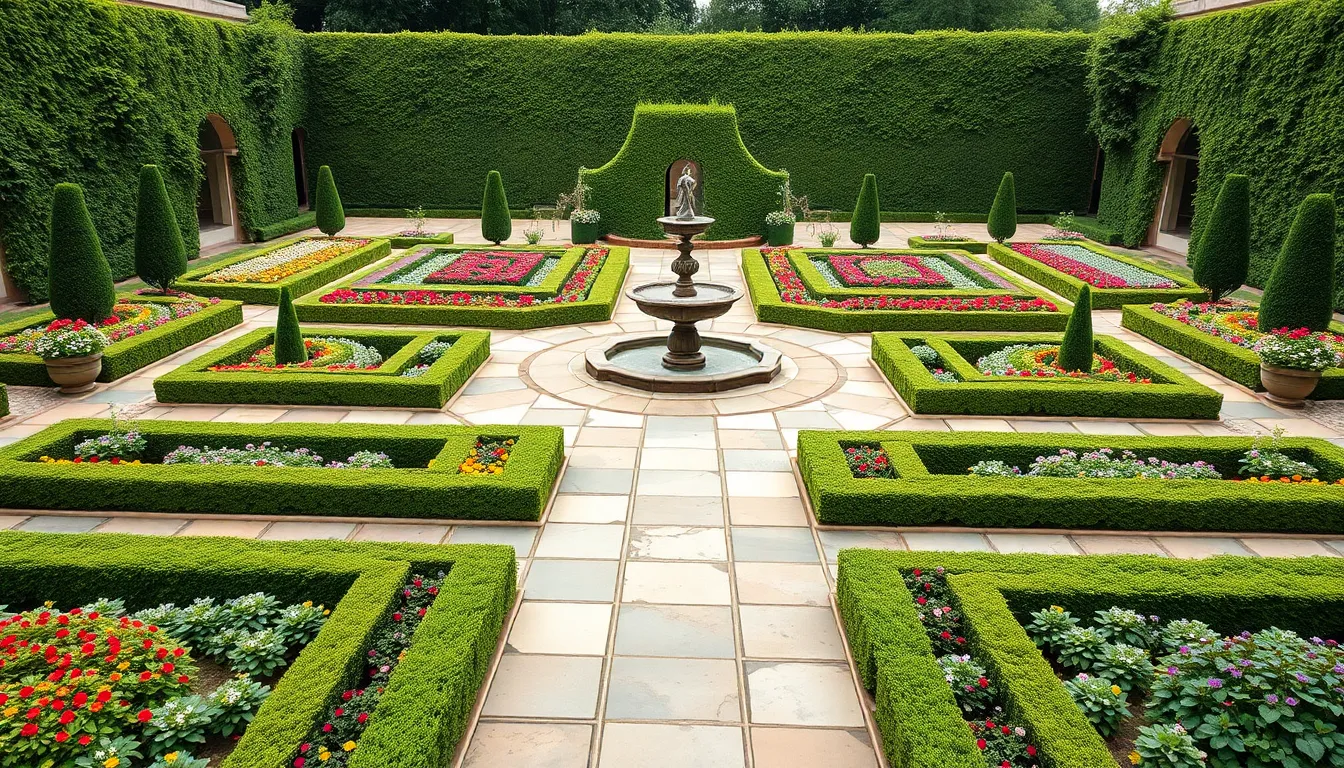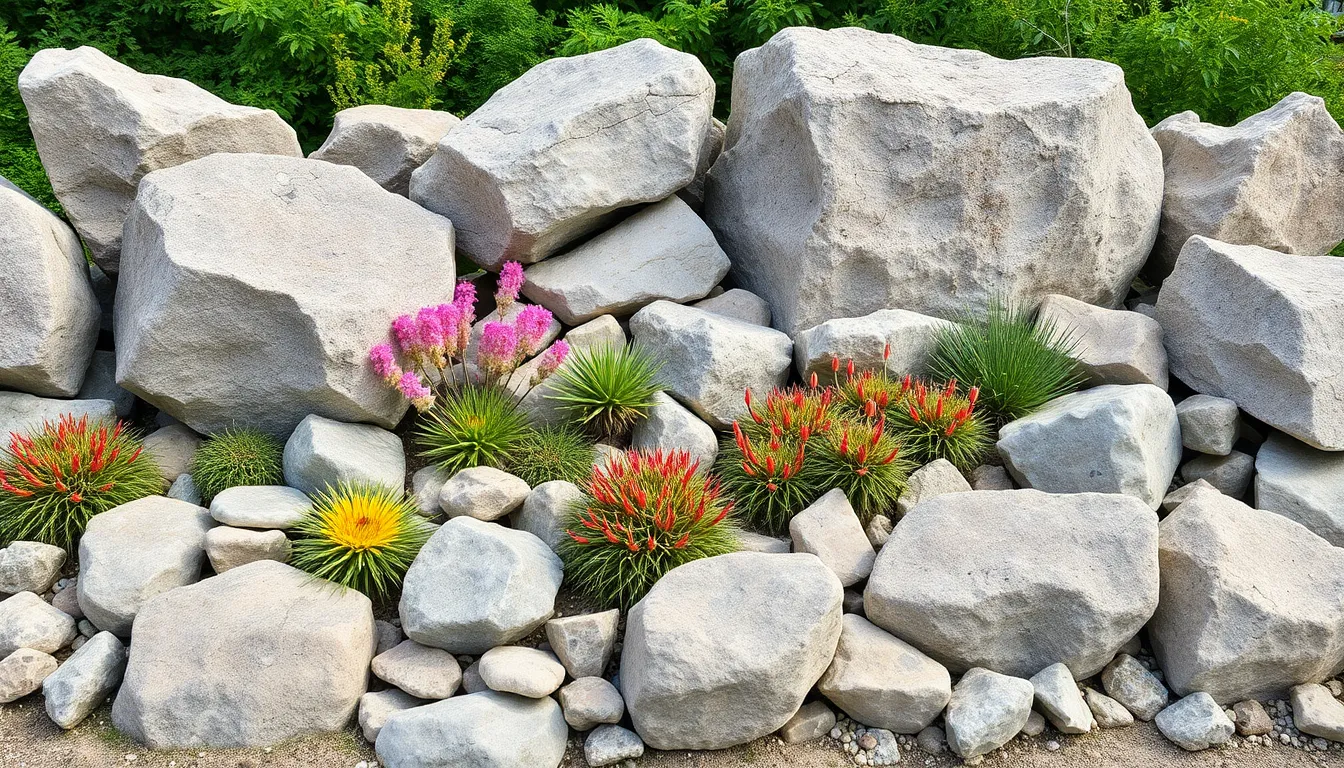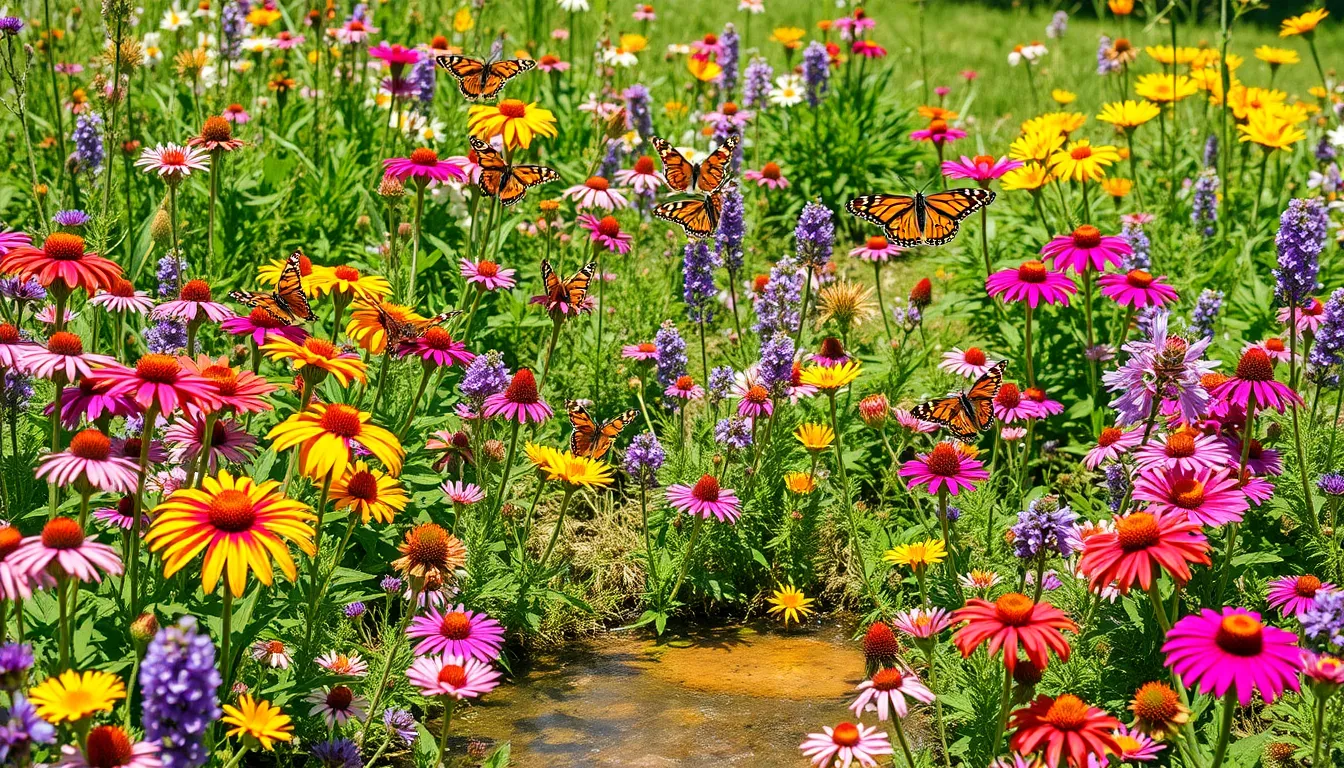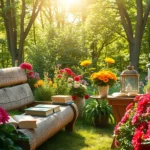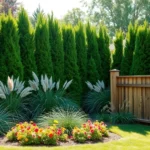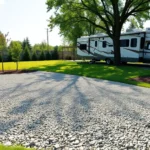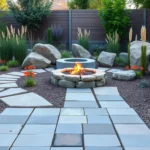We’ve all dreamed of transforming our outdoor spaces into stunning showcases that make neighbors stop and stare. Creating beautiful flower beds isn’t just about planting pretty blooms—it’s about designing living art that reflects your personality while boosting your home’s curb appeal and value.
Whether you’re working with a sprawling backyard or a compact front yard, the right flower bed design can completely revolutionize your industry. From vibrant cottage gardens bursting with color to sleek modern arrangements that emphasize clean lines, there’s a perfect style waiting to complement your home’s architecture and your gardening goals.
We’ll guide you through inspiring outdoor flower bed ideas that work for every skill level, budget, and space constraint. You’ll discover how to create eye-catching focal points, maximize seasonal interest, and design beds that practically maintain themselves while delivering maximum visual impact year after year.
Choose the Perfect Location for Your Outdoor Flower Bed
Selecting the right spot determines whether your outdoor flower bed ideas will flourish or struggle throughout the growing season. We’ll guide you through the essential factors that make the difference between a thriving garden and a disappointing display.
Assess Sunlight Exposure Throughout the Day
Full sun areas receive 6-8 hours of direct sunlight and support sun-loving perennials like black-eyed Susans, coneflowers, and marigolds. These bright locations work perfectly for Mediterranean-style gardens and vibrant cottage flower bed designs.
Partial sun spots get 4-6 hours of morning or late afternoon light, making them ideal for versatile plants such as hostas, astilbe, and begonias. We recommend observing your yard at different times to identify these moderate light zones.
Shade locations with less than 4 hours of direct sun call for specialized plants like caladiums, impatiens, and ferns. These areas often create stunning woodland-themed outdoor flower bed ideas near trees or building shadows.
Track sunlight patterns by checking the same spots at 9 AM, noon, 3 PM, and 6 PM during peak growing season. Seasonal changes affect light exposure as trees leaf out and the sun’s angle shifts throughout the year.
Consider Soil Drainage and Water Access
Well-draining soil prevents root rot and supports most flowering plants, while poorly draining areas create soggy conditions that kill sensitive varieties. Test drainage by digging a 12-inch hole and filling it with water—proper drainage empties the hole within 24 hours.
Clay soil holds moisture longer but may need amendments like compost or sand to improve drainage for delicate flowers. Sandy soil drains quickly but requires more frequent watering and organic matter to retain nutrients.
Water accessibility determines maintenance requirements and plant selection for your outdoor flower bed ideas. Locate beds within 50 feet of water sources to make regular watering manageable during dry spells.
Slope considerations affect water runoff and soil erosion, with gentle slopes providing natural drainage while steep areas may need terracing or retaining walls. Level ground offers the most flexibility for different flower bed designs.
Plan Around Existing Industry Features
Mature trees create natural focal points and provide partial shade, but their root systems compete with flowers for nutrients and water. Plant shade-tolerant varieties at least 3 feet from tree trunks to avoid root conflicts.
Hardscape elements like patios, walkways, and driveways offer structural support for flower bed borders and define planting areas. We suggest leaving 18-24 inches between hardscaping and plantings for proper growth space.
Utility lines and sprinkler systems require careful planning to avoid disruption during planting and maintenance. Call 811 before digging to locate underground utilities and prevent costly damage to buried cables or pipes.
Architectural features such as windows, doors, and building corners influence viewing angles and design proportions for your outdoor flower bed ideas. Scale plant heights appropriately—shorter varieties near windows and taller specimens as foundation plantings or privacy screens.
Create a Raised Flower Bed Design
Raised flower bed designs transform your outdoor space by elevating plantings above ground level for better drainage and easier maintenance. These structured gardens offer improved soil control while creating distinct focal points that enhance your industry’s visual appeal.
Build with Natural Stone or Brick Borders
Natural stone borders provide timeless elegance that blends seamlessly with any outdoor environment. Limestone and sandstone create sturdy retaining walls that hold soil effectively while adding texture and character to your flower bed design. Brick borders offer classic appeal that enhances curb appeal through their traditional styling and warm color tones.
Stone construction works particularly well on sloped terrain where you need tiered garden spaces. The natural materials increase your usable planting area while creating multiple levels for visual interest. Brick edging frames flower beds with clean lines that complement both cottage garden styles and formal industry designs.
These permanent border materials require minimal maintenance once installed. Stone and brick withstand weather conditions while providing excellent drainage support for your raised bed structure.
Use Wooden Planks for a Rustic Appeal
Wooden plank construction brings warmth and natural character to raised flower bed designs. Cedar and redwood planks resist rot naturally while creating attractive rustic borders that suit cottage garden aesthetics. Pine and oak planks offer budget friendly options when treated properly for outdoor use.
Wood planks adapt easily to various yard sizes and garden styles through simple or complex raised bed configurations. The versatile material pairs beautifully with informal garden designs where natural textures enhance the overall industry appeal. Planks can be arranged in single tier designs for shallow beds or stacked for deeper soil capacity.
Regular maintenance keeps wooden raised beds looking their best through periodic staining or sealing. The natural aging process adds character as wood develops a weathered patina over time.
Install Metal Edging for Modern Clean Lines
Metal edging delivers contemporary style through crisp lines that define flower beds sharply against lawns and pathways. Steel and aluminum options provide durable borders that require minimal maintenance while creating neat separation between planting areas. Corten steel develops an attractive rust patina that adds visual interest to modern garden designs.
These sleek materials suit minimalist gardens where clean geometry takes priority over ornate details. Metal edging doesn’t distract from plant displays but instead frames them with subtle definition. The thin profile maximizes planting space while maintaining precise bed boundaries.
Installation involves securing metal strips along your desired bed outline using stakes or connectors. The flexibility of metal edging accommodates curved designs and straight lines equally well for versatile garden planning.
Design a Colorful Perennial Flower Border
Creating a vibrant perennial border transforms any outdoor space into a stunning display of continuous color. We’ll explore strategic design techniques that ensure your flower bed remains visually captivating throughout the growing season.
Select Plants with Staggered Bloom Times
Planning sequential blooms keeps your flower bed colorful from spring through fall. Early spring welcomes tulips and daffodils with their bright yellow and vibrant purple petals. Mid-season performers like coneflowers and black-eyed Susans take center stage during summer months with their bold orange and golden hues.
Late bloomers such as asters and chrysanthemums extend the show into autumn. These fall favorites provide rich burgundy, deep purple, and warm amber tones when other flowers fade. Overlapping bloom periods create seamless transitions between seasons while maintaining constant visual interest.
Combining different flowering schedules ensures something’s always in bloom. We recommend selecting 3-4 plants from each bloom period to maintain consistent color coverage. This approach prevents gaps in your display and creates a ever-changing garden that evolves throughout the year.
Arrange Flowers by Height and Spread
Strategic height placement maximizes visibility and creates stunning visual depth. Taller perennials like sunflowers and hollyhocks work best in the back of borders or center of island beds. Their impressive 6-8 foot heights provide dramatic backdrops for shorter companions.
Medium height flowers fill the middle layer with substantial color impact. Daylilies and coneflowers typically reach 2-3 feet tall and offer excellent mid-border presence. These reliable performers bridge the gap between towering specimens and ground-level plants.
Low growing flowers and ground covers complete the front edge beautifully. Creeping phlox and alyssum spread horizontally while staying under 12 inches tall. This layered approach prevents shorter plants from being overshadowed while creating natural flow from tall to short.
Consider spread patterns when spacing plants for optimal growth. Some perennials like bee balm can spread 2-3 feet wide, while others like lavender maintain compact 18-inch footprints. Proper spacing prevents overcrowding and allows each plant to reach its full potential.
Incorporate Native Plants for Low Maintenance
Native species adapt naturally to local climate conditions and require minimal care. These plants evolved in your exact region and thrive without excessive watering, fertilizer, or pest control measures. Coneflowers, bee balm, and coreopsis represent excellent native choices for most regions.
Local wildlife benefits tremendously from native plant selections. Pollinators like bees and butterflies depend on indigenous flowers for food sources throughout their life cycles. Native plants support 35 times more wildlife than non-native species according to research studies.
Maintenance requirements decrease significantly with native plant choices. These hardy perennials typically need watering only during establishment periods and extreme drought conditions. Once established, they self-seed and spread naturally, reducing replacement costs and labor.
Ecological balance improves when native plants dominate flower bed designs. Natural pest control occurs as beneficial insects thrive alongside native flora. This creates sustainable garden ecosystems that maintain themselves with minimal human intervention.
Plan a Seasonal Annual Flower Display
Seasonal planning transforms outdoor flower beds into ever-changing displays that captivate throughout the year. We create lasting beauty by strategically planting bulbs, annuals, and fall flowers that bloom in succession from early spring through late autumn.
Choose Spring Bulbs for Early Color
Spring bulbs deliver the first burst of color after winter’s dormancy, awakening our gardens with vibrant blooms. We plant tulips, daffodils, and crocuses in the fall before ground freezes to ensure spectacular early season displays. Clustering these bulbs in natural drifts creates more visual impact than single plantings scattered throughout the bed.
Timing becomes crucial when selecting spring bulbs for our flower beds. We choose early bloomers like snowdrops and crocuses for February color, followed by daffodils in March, and tulips for April displays. Layering different bulb varieties at various depths maximizes our planting space while extending the blooming period.
Plant Summer Annuals for Continuous Blooms
Summer annuals provide nonstop color throughout the warmest months when our gardens need consistent vibrancy. We select zinnias, dahlias, and pansies for their reliable blooming performance in sunny locations with adequate water. Arranging these plants by height creates depth, positioning taller specimens toward the back and shorter varieties in front.
Regular maintenance keeps our summer annuals performing at their peak throughout the growing season. We deadhead spent blooms weekly to encourage continued flowering and water consistently during dry spells. Fertilizing monthly with balanced plant food sustains vigorous growth and abundant blossoms from June through September.
Add Fall Flowers for Extended Interest
Fall flowers extend our outdoor flower bed’s appeal well into autumn when many gardens begin to fade. We incorporate chrysanthemums and asters for their rich warm hues that complement the changing foliage around them. These hardy perennials thrive in cooler temperatures while providing essential late season nectar for pollinators.
Strategic placement of fall bloomers creates seamless transitions from summer displays to autumn interest. We interplant mums between summer annuals in July, allowing them to establish before their September bloom time. Adding ornamental grasses alongside fall flowers provides texture contrast and movement that enhances the overall seasonal display.
Establish a Cottage Garden Style Flower Bed
Cottage garden style flower beds capture the romantic, informal charm that makes outdoor spaces feel like living artwork. We’ll create a densely planted paradise where flowers spill over beds naturally, mixing ornamental plants with edible varieties for a lush, overflowing aesthetic.
Mix Flowers with Herbs and Vegetables
Blending flowers with herbs and vegetables creates the functional beauty that defines authentic cottage gardens. We recommend freely mixing cabbage, Swiss chard, basil, and rosemary among your blooming plants without strict organizational rules. This combination attracts beneficial insects like bees and ladybugs while adding diverse textures and color contrasts throughout your beds.
Traditional cottage gardeners understood that edible plants offer visual appeal beyond their practical uses. Colorful Swiss chard leaves provide burgundy and yellow foliage that complements pastel flowers beautifully. Purple cabbage creates stunning contrast against white sweet alyssum, while herbs like lavender and sage contribute fragrant silver foliage that enhances the overall sensory experience.
Create Informal Pathways Through Plantings
Curving pathways encourage exploration and enhance the natural, relaxed atmosphere we’re cultivating in cottage style beds. Materials like bluestone, weathered brick, wood chips, or crushed gravel work exceptionally well for these meandering routes through your plantings. These informal paths invite visitors to wander and discover hidden corners, making even smaller gardens feel larger and more immersive.
Design your pathways to curve naturally around plant groupings rather than cutting straight lines through beds. Stone stepping stones placed irregularly create a whimsical feel, while allowing flowers to spill over edges and soften hard surfaces. Wide paths accommodate two people walking side by side, fostering the social atmosphere that cottage gardens traditionally encourage.
Use Traditional Cottage Garden Plants
Ground cover plants form the foundation layer of successful cottage garden beds. Lamium (Dead Nettle), Veronica Waterperry Blue, and creeping phlox provide low growing carpets that suppress weeds while offering continuous color throughout the growing season. These spreading plants create natural transitions between taller specimens and pathway edges.
Colorful perennial flowers add the signature cottage garden charm we’re seeking. Dianthus varieties like Waterloo Sunset and Raspberry Surprise provide fragrant blooms in soft pinks and whites, while yarrow offers feathery textures in yellow and coral tones. English lavender contributes both fragrance and silvery foliage that complements virtually every color palette.
Foundation shrubs provide structure and year round interest behind shorter plantings. Boxwood creates neat green backdrops, while climbing roses trained on simple supports add vertical elements and classic cottage appeal. Holly bushes offer evergreen structure, and juniper topiaries provide formal contrast against the informal planting style we’re establishing throughout the rest of the bed.
Build a Formal Geometric Flower Garden
Creating a formal geometric flower garden transforms your outdoor space into an elegant, structured industry that emphasizes symmetry and architectural precision. This classic design style uses straight lines, clear edges, and geometric shapes to create a sophisticated garden that complements both traditional and contemporary homes.
Design Symmetrical Planting Patterns
Symmetrical planting patterns form the foundation of formal geometric gardens by creating visual balance through mirrored arrangements. We design these patterns around a central axis that runs from front to back, serving as both the visual and physical spine of the garden. This central pathway can be constructed with pavers, gravel, or natural materials like mulch, often leading to a focal point such as a statue or water feature.
Plant beds and pathways mirror each other on both sides of the central axis to maintain perfect balance. We arrange walkways and flower beds in repetitive geometric patterns like parterres, which enhance order and visual harmony throughout the space. These symmetrical arrangements extend to both plant selection and garden feature placement, ensuring every element contributes to the overall structured aesthetic.
Repetitive geometric shapes like squares, rectangles, circles, or triangles define the planting areas within the formal design. We use these shapes consistently throughout the garden to reinforce the geometric theme and create a cohesive visual experience that draws the eye through the industry.
Maintain Precise Edges and Borders
Precise edges and borders define the crisp boundaries that separate different areas within formal geometric gardens. We create these sharp, neat edges using trimmed hedges, topiaries, or clean lines of low growing plants that maintain clear distinctions between pathways, lawn, and planting areas.
Regular maintenance involves consistent clipping of shrubs and hedges to preserve the garden’s elegance and geometric clarity. We schedule routine trimming to ensure borders remain uniform in height and shape, preventing the informal growth that would compromise the structured appearance.
Clean boundary lines between different garden elements enhance the sophisticated appeal of formal designs. We use materials like metal edging or stone borders to reinforce these precise separations, creating permanent answers that require minimal ongoing maintenance while preserving the garden’s architectural integrity.
Select Uniform Plant Varieties
Uniform plant varieties reinforce the structured appearance by maintaining consistency in color, form, and size throughout the flower beds. We select plants that can be maintained at consistent heights and shapes to support the garden’s symmetry and formal aesthetic requirements.
Evergreens styled into topiary shapes serve as foundational elements alongside carefully coordinated color palettes. We incorporate these sculptural plants as anchor points within the geometric design, using their year round structure to maintain visual interest even during dormant seasons.
Plant selection focuses on varieties that respond well to regular pruning and shaping to preserve the formal appearance. We choose species known for their ability to maintain uniform growth patterns and consistent flowering habits, ensuring the garden’s structured look remains intact throughout multiple growing seasons.
Construct a Rock Garden Flower Bed
Rock gardens offer a stunning alternative to traditional flower beds while providing excellent drainage and requiring minimal maintenance. We’ll guide you through creating a natural-looking rock garden that thrives in challenging conditions.
Choose Alpine and Drought-Tolerant Plants
Selecting the right plants forms the foundation of a successful rock garden flower bed. Alpine plants and drought-tolerant species naturally thrive in rocky, well-drained environments that mimic their native habitats.
Rock soapwort (Saponaria ocymoides) produces bright pink flowers while spreading to fill gaps between stones. This low-maintenance perennial requires minimal water and creates beautiful ground coverage throughout the growing season.
Euphorbia firesticks (Euphorbia tirucalli ‘Sticks on Fire’) adds striking red-orange stems that provide year-round color contrast. These hardy succulents flourish in hot, dry conditions and require virtually no supplemental watering once established.
Ice plants and various sedums offer vibrant blooms and interesting textures that complement rocky landscapes. We recommend spacing these plants according to their mature size to prevent overcrowding as they establish.
Violets and other low-growing perennials soften the edges of rocks while providing seasonal color. Plant these species tighter toward the top of rock mounds where drainage is optimal for their root systems.
Arrange Rocks for Natural Drainage
Strategic rock placement creates the foundation for proper water management in your flower bed. Start by positioning larger rocks at the base to establish natural drainage channels that prevent waterlogging.
Larger boulders should be placed unevenly to mimic natural rocky landscapes found in mountainous regions. This irregular arrangement creates visual interest while directing water flow away from plant roots.
Stone positioning requires careful consideration of water movement patterns. We recommend testing drainage by observing how water flows during rain or irrigation to ensure proper placement.
Variety in rock placement prevents the artificial look of manufactured landscapes. Mix different stone orientations and angles to create authentic-looking formations that enhance both function and aesthetics.
Create Levels with Different Stone Sizes
Layering stones of varying sizes creates depth and visual appeal while improving drainage dynamics throughout your rock garden.
Bigger boulders serve as focal points and anchor the overall design. Position these statement pieces first, then build around them with progressively smaller stones to create natural-looking transitions.
Smaller rocks fill gaps and create intimate planting pockets for delicate alpine species. These stones also help retain soil while allowing excess water to drain freely through the structure.
Texture variation comes from combining different stone sizes and types. We suggest using a mix that includes both angular and rounded stones to create visual interest and accommodate different plant needs.
Height transitions should flow naturally from one level to the next. This layered approach allows you to showcase plants at different elevations while maintaining proper drainage throughout the entire flower bed.
Install a Butterfly and Pollinator Garden
Creating a dedicated butterfly and pollinator garden transforms your flower bed into a vibrant network that supports local wildlife while providing continuous blooms. This specialized garden design focuses on nectar-rich, tubular, and brightly colored flowers that attract butterflies, including monarchs and swallowtails.
Plant Native Wildflowers and Flowering Shrubs
Native wildflowers form the foundation of successful pollinator gardens because they’ve evolved alongside local butterfly species and provide optimal nutrition. We recommend implementing the 3 x 3 x 3 system, which involves selecting 3 native species that bloom during spring, summer, and fall seasons respectively.
Wildflower seed mixes containing native varieties ensure diverse pollinator populations throughout multiple growing seasons. Flowering shrubs like penstemon, lavender, phlox, bee balm, butterfly bush, and lantana offer excellent nectar sources while providing structural variety to your garden design.
Spring bloomers such as wild lupine and columbine attract early emerging butterflies when food sources are scarce. Summer favorites include native sunflowers, black-eyed Susan, and purple coneflower that support peak butterfly activity. Fall blooming asters and goldenrod extend the feeding season into autumn migration periods.
Provide Host Plants for Butterfly Larvae
Host plants serve as nurseries where butterflies lay eggs and caterpillars develop into adults, making them essential components of any pollinator garden. Milkweed stands as the most critical host plant for monarch butterflies, as their larvae can only survive on this exact plant family.
Swallowtail butterflies require different host plants including parsley, fennel, rue, and dill for their caterpillars’ development. These herbs offer dual benefits by supporting butterfly breeding while providing fresh ingredients for your kitchen.
Native trees and shrubs also function as host plants for various butterfly species. Willow trees support mourning cloak butterflies, while cherry and plum trees host tiger swallowtails. Including diverse host plants encourages butterfly breeding and ensures long-term garden visits from multiple generations.
Include Water Features for Wildlife
Shallow water sources provide essential hydration for butterflies and other pollinators while adding sensory appeal to your garden design. Small puddling areas created with stones and shallow dishes allow butterflies to drink safely without drowning risk.
Dripping water features attract pollinators through sound and movement while maintaining fresh water supplies. We suggest positioning water sources near flowering plants where butterflies naturally congregate during feeding times.
Simple DIY puddling stations using buried saucers filled with sand and water create ideal butterfly watering holes. These features support wildlife health during hot summer months when natural water sources may become scarce. Rocky features around water areas provide perching spots where butterflies can rest between feeding sessions.
Design a Vertical Flower Bed Garden
Vertical flower beds transform limited outdoor space into stunning displays that add height and visual drama to your industry. We’ll explore proven techniques for creating these space-efficient gardens that maximize your growing area while delivering impressive results.
Use Trellises and Climbing Supports
Trellises create instant vertical growing space for climbing flowers while adding architectural interest to your garden design. We recommend positioning these structures along existing fences or as standalone features within your flower bed to maximize vertical space utilization.
Climbing flowers like clematis, morning glory, and sweet peas thrive when given proper support structures to grow upward. These varieties naturally seek vertical surfaces and reward gardeners with abundant blooms that cascade from heights of 6 to 12 feet.
Strategic placement of trellises allows you to create natural privacy screens while maintaining airflow through your garden space. We suggest installing trellises at least 6 inches away from solid walls to ensure proper air circulation around your climbing plants.
Materials for trellises range from classic wooden lattice to modern metal frameworks, each offering different aesthetic appeals and durability levels. Cedar and redwood provide natural weather resistance, while powder coated steel offers contemporary styling that complements modern industry designs.
Plant Cascading Flowers in Containers
Cascading flowers in elevated containers create dramatic spillover effects that soften hard edges throughout your vertical garden design. We position containers at varying heights to establish visual layers that draw the eye upward and outward.
Petunias, lobelia, and nasturtiums excel as cascading varieties that produce abundant trailing growth patterns. These flowers naturally spill over container edges, creating lush curtains of color that can extend 12 to 18 inches beyond their planting containers.
Container placement above garden beds or along raised edges maximizes the cascading effect while ensuring proper drainage. We recommend using containers with drainage holes and positioning them where overflow water benefits the plants below.
Hanging baskets suspended at different heights create a tiered effect that adds depth and dimension to your vertical flower bed. This layering technique produces a fuller, more abundant appearance that makes even small gardens feel expansive and well established.
Create Living Walls with Flowering Vines
Living walls transform plain vertical surfaces into vibrant displays using flowering vines that grow directly on walls or specialized panel systems. We use this technique to convert unused wall space into productive growing areas that deliver maximum visual impact.
Flowering vines like honeysuckle and jasmine provide both color and fragrance while creating lush coverage on vertical surfaces. These hardy climbers establish quickly and can cover areas of 20 to 40 square feet within their first growing season.
Specialized panel systems allow for easier maintenance and plant replacement compared to direct wall plantings. We recommend modular living wall systems that include built in irrigation and proper drainage to ensure healthy plant growth and wall protection.
Wall preparation involves installing appropriate support structures and moisture barriers to protect building surfaces while supporting plant growth. This approach prevents damage to your home’s exterior while creating stunning vertical gardens that enhance curb appeal and property value.
Conclusion
Creating stunning outdoor flower beds transforms any space into a personal sanctuary that reflects your unique style and vision. Whether you’re drawn to the romantic charm of cottage gardens or the clean lines of formal geometric designs we’ve explored countless possibilities that work within any budget or skill level.
From vertical gardens that maximize small spaces to pollinator-friendly designs that support local wildlife every approach offers its own rewards. The key lies in choosing techniques that align with your maintenance preferences and environmental conditions.
Your outdoor flower beds will become living masterpieces that evolve with each season bringing joy to both you and your community. Start with one design that speaks to you and watch as your confidence grows along with your beautiful blooms.
Frequently Asked Questions
What are the key factors to consider when choosing a location for flower beds?
When selecting a location for flower beds, focus on three main factors: sunlight exposure, soil drainage, and water accessibility. Assess how much sun different areas receive throughout the day to match plants with their light requirements. Ensure the soil drains well to prevent root rot, and choose spots that are easily accessible for watering and maintenance. Also consider existing landscape features like trees and hardscaping elements.
How do I create a flower bed that blooms throughout the entire growing season?
Plan for continuous blooms by selecting plants with staggered flowering times. Choose a mix of early spring bloomers, summer performers, and fall flowers. Include spring bulbs, summer annuals, and late-season perennials. Arrange plants by height and spread to create depth, and incorporate native plants for low maintenance. This approach ensures your garden provides visual interest from spring through fall.
What materials work best for creating raised flower bed borders?
Popular border materials include natural stone and brick for timeless elegance and durability, wooden planks for rustic appeal, and metal edging for modern, clean lines. Each material offers different aesthetic benefits: stone and brick provide classic charm, wood adds warmth and natural texture, while metal creates sharp definition against lawns and pathways. Choose based on your garden style and maintenance preferences.
What defines a cottage garden style flower bed?
Cottage gardens feature romantic, informal charm with a mix of ornamental plants, herbs, and vegetables. They emphasize functional beauty by combining flowers with edible varieties, creating diverse textures and attracting beneficial insects. Key elements include informal pathways, layered plantings with ground covers and colorful perennials, and traditional cottage plants that create a lush, natural atmosphere throughout the year.
How do I design a formal geometric flower garden?
Formal geometric gardens emphasize symmetry and architectural precision. Create symmetrical planting patterns around a central axis with mirrored arrangements for visual balance. Use uniform plant varieties that maintain consistent heights and shapes, and establish precise edges with trimmed hedges or clean borders. Regular maintenance is essential to preserve the structured appearance and geometric clarity throughout the seasons.
What are the benefits of creating a rock garden?
Rock gardens offer excellent drainage and require minimal maintenance compared to traditional flower beds. They’re perfect for alpine and drought-tolerant plants that thrive in rocky environments. Strategic rock placement creates natural drainage channels and visual interest, while layered stones of varying sizes improve both aesthetics and functionality. Rock gardens are ideal for challenging terrain and water-wise gardening.
How do I create a butterfly and pollinator garden?
Focus on native wildflowers and flowering shrubs using the 3 x 3 x 3 system: select plants that bloom in spring, summer, and fall. Include host plants for butterfly larvae, such as milkweed for monarchs and herbs for swallowtails. Add water features like simple puddling stations near flowering plants to provide hydration. This approach supports local wildlife while ensuring continuous blooms throughout the growing season.
What are vertical flower bed gardens and how do I create them?
Vertical flower beds maximize limited space by adding height and visual drama. Use trellises and climbing supports for flowers like clematis and morning glory. Create privacy screens with strategic trellis placement, use cascading flowers in elevated containers for spillover effects, and consider living walls with flowering vines. Proper wall preparation and regular maintenance are essential for successful vertical gardening.

